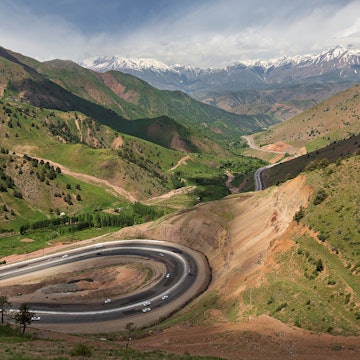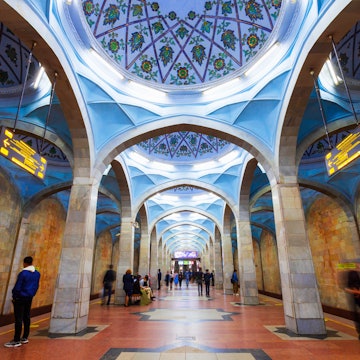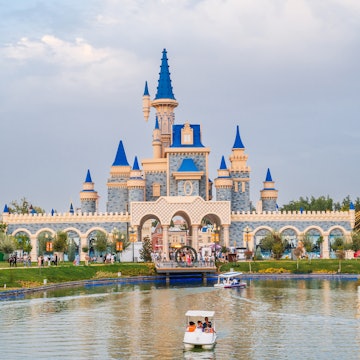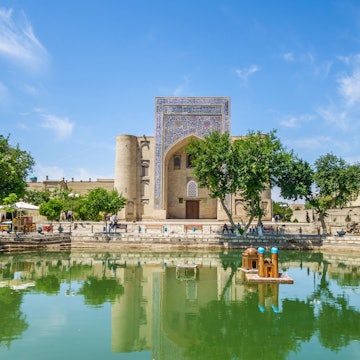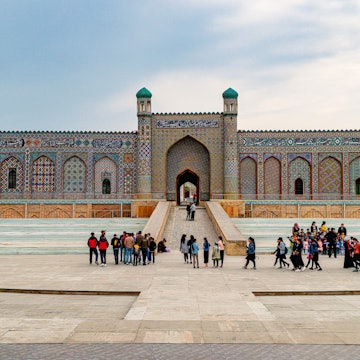
Making a Silk Road journey through Uzbekistan entirely by train

Jul 18, 2023 • 5 min read

The high-speed Afrosiyob train will whisk you across the Uzbek desert © ullstein bild / Getty Images
Paula Hotti explains how a train journey through Uzbekistan offers a wonderful way to discover the ancient Silk Road.
As I sit in the refreshingly cool Urgench railway station, ready to start my Silk Road train journey in Uzbekistan, a woman holding a sweeping brush approaches. Despite the language barrier, her purpose is clear: to check my ticket and ensure I board the correct train.
My dream train journey is about to start.
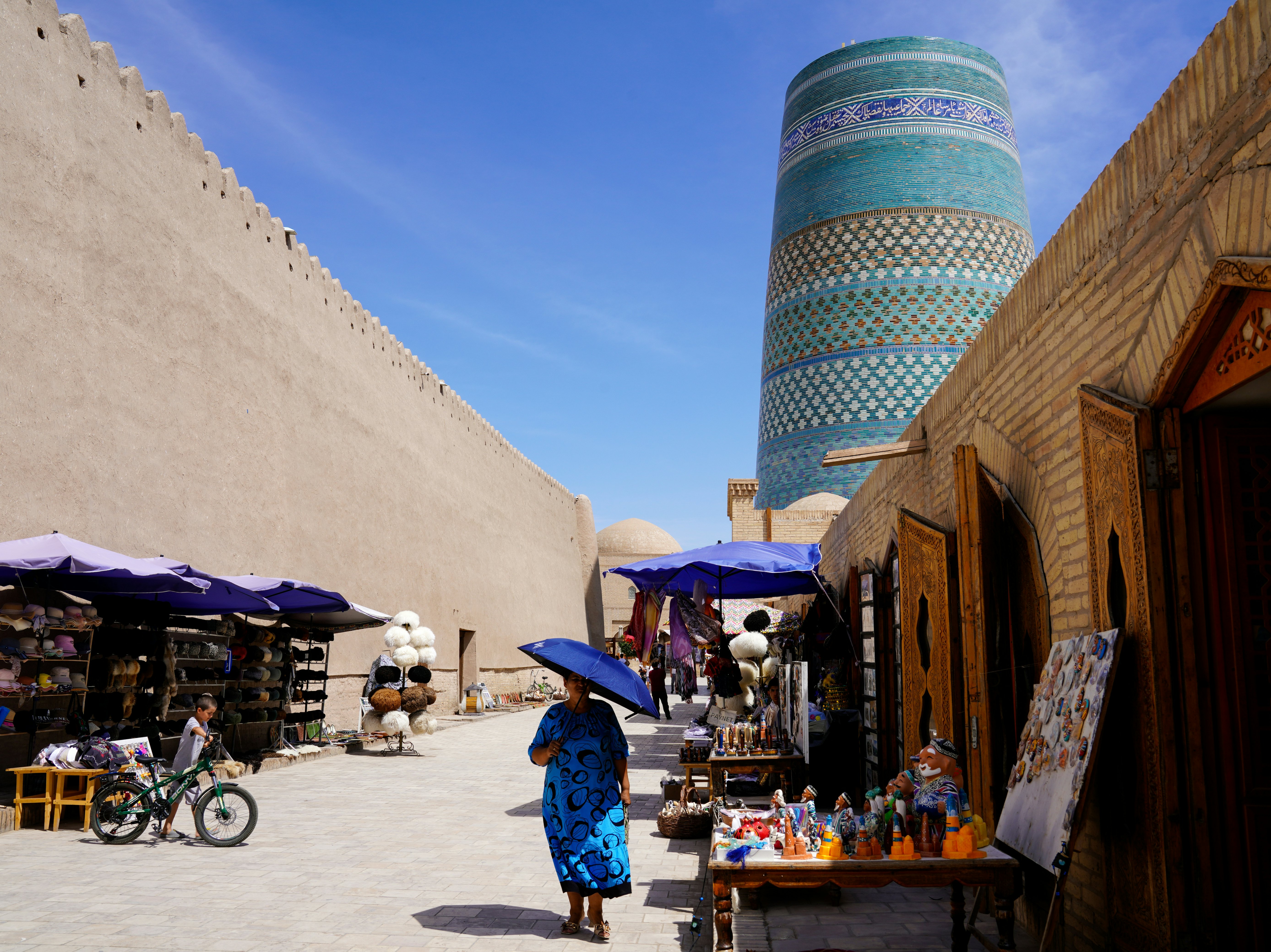
Six non-flying years
Before my previous visit to Uzbekistan last November, I hadn’t stepped into an airplane in almost six years – a choice that wasn’t the easiest route for a travel writer, financially, but one that turned out to be highly mentally rewarding. Not only because I felt I was doing my part to prevent further damage to the planet, but also because I relished the satisfactory feeling that comes when overcoming the challenges of overland journeys.
Yet as pandemic restrictions eased up, I wanted to ease up on myself, too: so when an opportunity arose to fly to Uzbekistan, I took it. Though I hadn’t visited before, I had dreamed of its Silk Road cities often. And as I stood in Samarkand’s Registan, I vowed to return – even if it required another trip on an airplane.
Fast-forward seven months, and I find myself sitting in that Urgench train station, ready to start my train odyssey from ancient Khiva, Bukhara and Samarkand to the capital, Tashkent.
The first leg: tea and sympathy
The Soviet-era Sharq train waiting at Urgench is a retro sight indeed. As the steps are high, a conductor helps passengers on and off the train. I find my seat among bunk beds, then sit back and let the verdant scenery roll by. I think of times of yore, when this historic route was frequented by camels carrying silk, spices and other treasures.
Beyond its mood-setting charm, the 30-minute train ride from Urgench to Khiva is a communal experience. As the train gently chugs on, I receive a complimentary cup of green tea from the conductor, who, moments before, wanted to pose for a photo.
For the first legs of my trip I have opted for the most modest way of travel: a seat among bunk beds in the Sharq train, in cars without air conditioning – even for the almost eight-hour passage from Khiva to Bukhara, across the Kyzylkum Desert.
From Bukhara to Samarkand, I secured a first-class ticket on another Sharq train, reserving Uzbekistan’s fastest train, the Afrosiyob, for the final stretch from Samarkand to Tashkent.
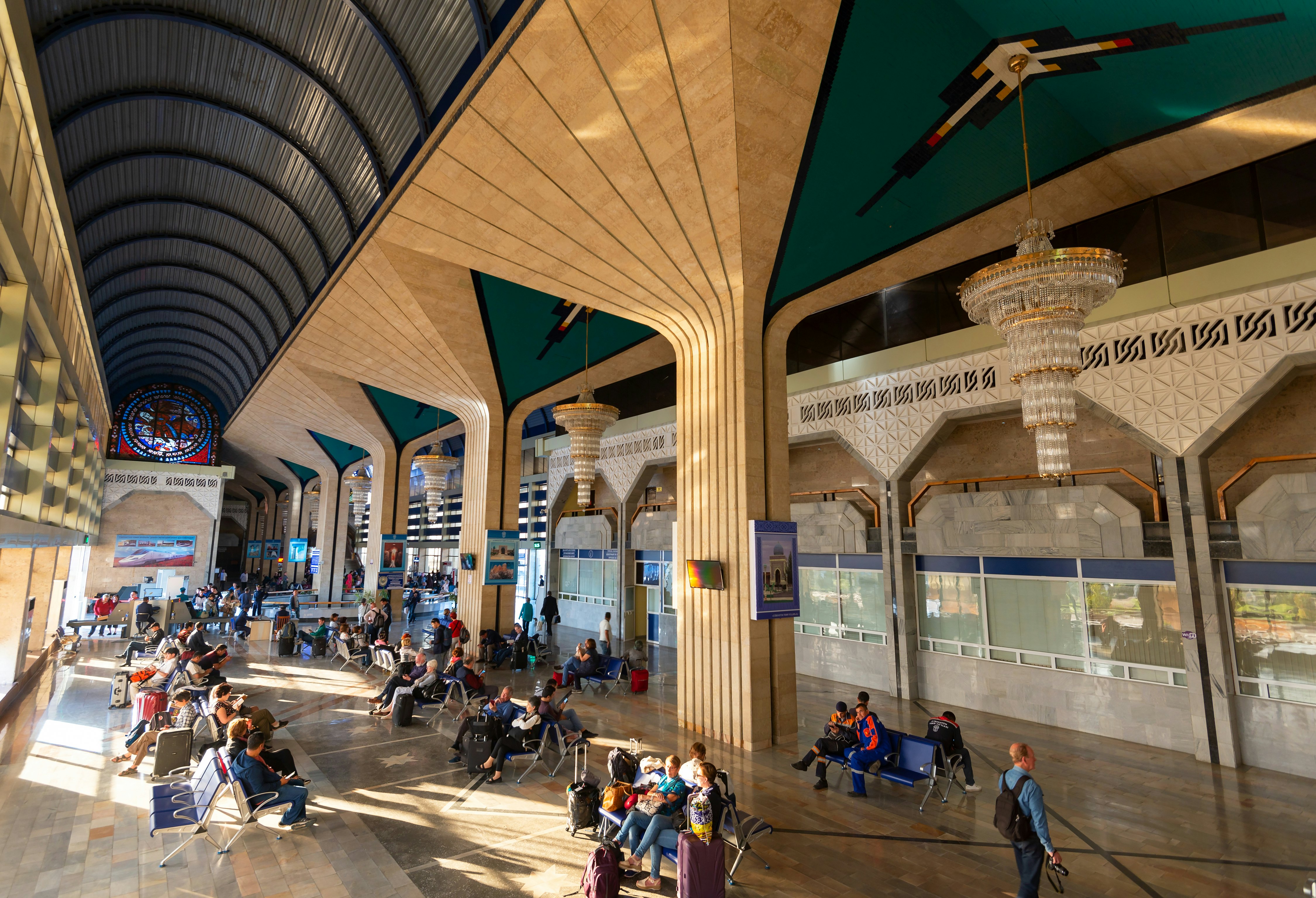
Entering the stations
One or two days is enough to explore Khiva’s main sights, from the little shops selling souvenirs in ancient streets to the walls surrounding the old town, a perfect sunset-watching spot.
Continuing toward Bukhara, I find out that at least the main stations along the route follow the style set in Urgench. First, passengers enter the gated stations by going through security, with tickets and passports checked and bags going through an x-ray. No one without a ticket can enter the stations.
Across the desert from Khiva to Bukhara
The journey from Khiva to Bukhara is the trip’s highlight, combining hours of mesmerisingly monotonous desert landscape with the delightful camaraderie only train travel provides. First, I am consumed in a chat (again with no shared language) with a man who shows me photographs of his grandchildren while I entertain him with photos from my native Finland. We bond over tea, munching on bread he brought and biscuits I had purchased at the train station. A boy sitting opposite asks me to take a photo of him. Diyorbeg is 16 and on his way to Moscow to participate in a knowledge competition.
The desert journey flies by as my newfound translator facilitates communications with other passengers. Questions pour in. Where am I from? Why am I here? Why am I traveling alone? I also notice people secretly photographing me – which is just fine, since I am doing the same.

Stopping off along the Silk Road: Bukhara and Samarkand
Bukhara and Samarkand are the main stops along my Silk Road train trip in Uzbekistan. Samarkand dazzles with its mosaics and gilt; Bukhara is more understated, with less-restored facades and whitewashed archways hiding carpet and other souvenir sellers. I spend three days exploring Bukhara’s ancient marvels – and hitting its marketplaces – before continuing to Samarkand, this time enjoying the Sharq’s first class.
The atmosphere here is different from the constant tea sipping and chatting on my earlier legs. But in June’s sauna-like heat, I welcome the air-conditioned car.

The journey’s end: the fast train from Samarkand to Tashkent
I have saved the modern bullet train Afrosiyob for last. Ironically, this is also the only train that arrives at the station late – problems due to the heat, a helpful translator tells me (the station lacks English announcements).
I head to the restaurant car and find staff members having a quick snack. In an already familiar Uzbek fashion, the chef requests a photo and rewards me with an iced coffee with a sprinkle of cinnamon.
Sipping on my drink, I watch the train making its way between high hills that mark the borders with Tajikistan to the south and Kazakhstan to the north. As the sun starts to set on the ancient landscape, Tashkent draws nearer. With a hint of cinnamon lingering in my mouth, I reflect on how my epic Silk Road train odyssey has exceeded all my expectations.
How to make it happen
Tickets
Tickets can be bought at Uzbekistan Railroads’ website. For the Afrosiyob, book at least a couple of weeks ahead. My economy-class Sharq ticket from Khiva to Bukhara cost €8.60, the first-class Sharq on to Samarkand cost €7.40. Afrosiyob tickets from Samarkand to Tashkent cost €11 for economy class, and €16 for business class.
Food and drink
Most bring their own food even though there are drinks, snacks and food available in the bistro cars. On some trains, mobile vendors walk through the train selling cold drinks and snacks. Boiling water is available between the cars. Bistro cars have cold and hot drinks as well as snacks. Remember to always carry cash if you want to buy something on board.
Bring some nice treats for the journey in case you are offered tea or food by other travelers: this will allow you to give something in return.
Facilities
Toilets tend toward the dirtier side in the Sharq trains; in the stations, they are spotless.








